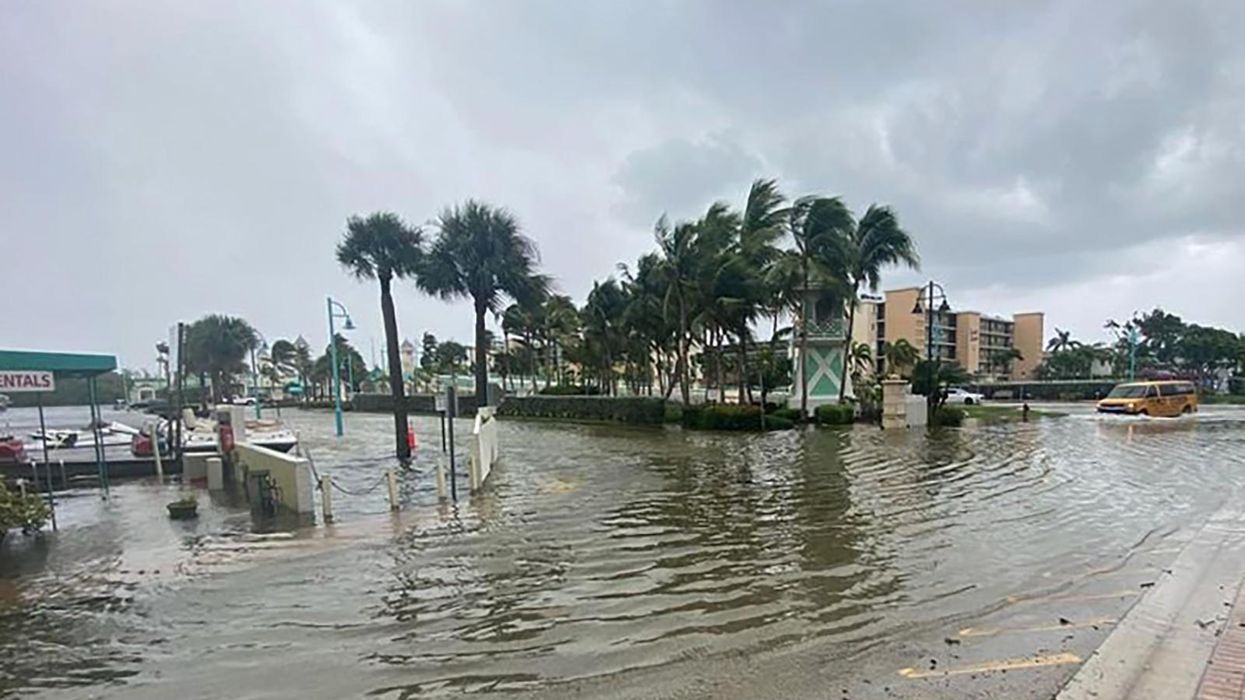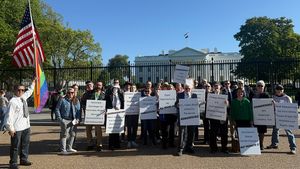Two people were "electrocuted by a downed power line" in Orange County, the Orange County Sheriff's Office said in a press release.
A tornado threat, plus powerful wind and heavy rain, are expected to continue Thursday in parts of Florida, Georgia and South Carolina after Nicole, which hit at Category 1 strength, weakened to a tropical storm. A tropical storm warning is in effect from Sebastian Inlet, Florida, to the South Santee River in South Carolina, and along Florida's west coast -- an area struck hard by Hurricane Ian in September -- from Englewood to Indian Pass. Storm surge warnings also remain in place across coastal Florida and Georgia.
Meantime, communities are assessing the damage. In Volusia County, emergency management officials reported one storm-related injury involving a tree and a vehicle. Separately, officials got "preliminary reports of a partial collapse" of a single-family residence on the coast in Daytona Beach Shores, which is still recovering from Ian's impact.
Ahead of Nicole's landfall, Volusia County officials told people to leave more than 20 buildings found to be structurally unsound after Ian, and the sheriff warned of potential building collapses. And in Daytona Beach Shores, at least 11 buildings were at risk of collapse, Public Safety Department Director Michael Fowler said.
In Indian River County, officials Thursday morning will "be assessing debris and messaging cleanup plans," spokesperson Kathy Copeland. In St. Lucie County, there were so far "no serious reports of damages or injuries," spokesperson Erick Gill said, adding, "Most likely the biggest impact is going to be beach erosion."
At 10 a.m. ET Thursday, Nicole was still packing 50-mph sustained winds and centered about 30 miles northeast of Tampa, moving west-northwest at 16 mph.
Up to 8 inches of rain could drench eastern, central and northern portions of Florida through Saturday. And between 2 to 6 inches are expected from parts of the US southeast to the southern and central Appalachians and western mid-Atlantic, the hurricane center said.
Nicole is expected to weaken to a depression early Friday and become a post-tropical cyclone over the Southeast.
Here's what to know now:
Residents outside Florida should now prepare: "Given the uncertainty of the storm's strength and path as it approaches South Carolina, residents need to have their personal emergency plans ready to go just in case we need to take safety precautions later in the week," said Kim Stenson, who heads the state's emergency management division.
Tens of thousands without power: More than 335,000 homes and businesses in Florida were without power early Thursday, according to PowerOutage.us.
Low tide limits storm surge: Nicole's peak winds coincided with low tide, limiting the storm surge and inundation on the shore. At Port Canaveral, the surge was measured at just under 6 feet around 4 a.m. ET, just after landfall. Later Thursday morning, surge was down to around 3 feet, but water levels are expected to remain high through high tide, between 8 a.m. and 10 a.m.
King Tide puts structures at risk: The King Tide that affected Volusia County Thursday morning "is of great concern for potentially further damage to structures," said officials with Volusia County Emergency Management. King Tides is a term used to describe higher than normal tidal cycles that typically occur during a new moon or a full moon when the moon makes its closest pass to the Earth. When they coincide with bad weather including heavy rain, winds and waves, they can cause severe flooding. Because of rising sea levels, King Tides are becoming more frequent and severe.
Flights canceled and schools closed: The storm's colossal path led to the closure of many schools, colleges and universities, as well as the cancellation of hundreds of flights and the shuttering of amusement parks. Orlando International Airport halted operations Wednesday afternoon, and Miami International Airport warned of cancellations but did not plan to close.
Historic hurricane: Nicole's landfall Thursday was the latest in a calendar year a hurricane has ever struck Florida's Atlantic coast. It broke the record set by the Yankee Hurricane, which hit Florida's east coast on November 4, 1935.
Where the storm hit: The storm struck just south of Vero Beach with winds of 75 mph before quickly weakening, the National Hurricane Center said. Its strong winds, downpours and storm surge thrashed some areas hit in September by Hurricane Ian. Nicole on Wednesday brought strong winds and dangerous storm surge to the northwestern Bahamas.
The-CNN-Wire
™ & © 2022 Cable News Network, Inc., a Warner Bros. Discovery Company. All rights reserved.


















































